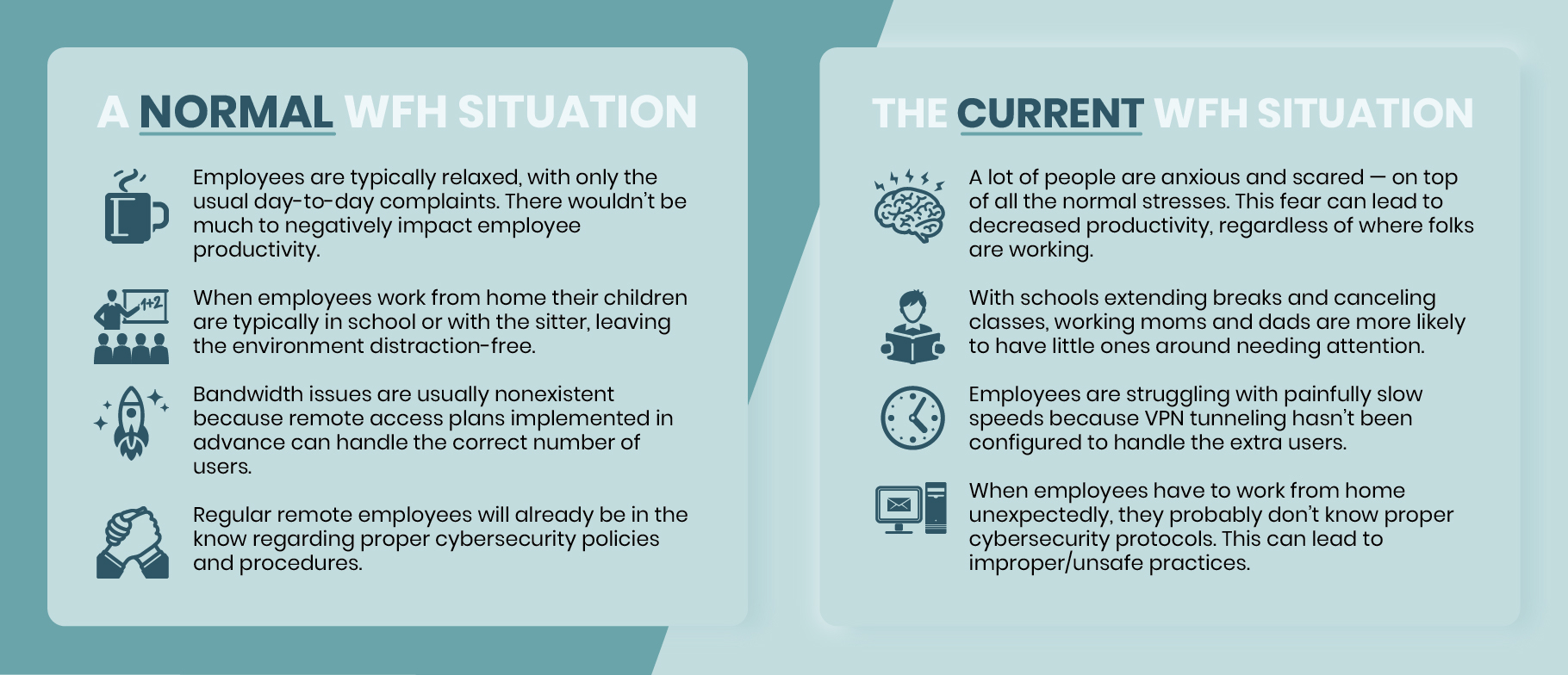What Happens When You Don’t Prepare for Remote Work?
With the Coronavirus causing so many employees to work from home, people predict that this may permanently change the face of remote work — with remote work becoming the new norm. Hopefully organizations realize how valuable remote work can be, but a lot is hinging on how companies handle the here and now.
A lot of organizations are using this time as a test to determine whether or not remote employment can actually work as a permanent option. Some organizations already had remote work infrastructure in place prior to COVID-19, and are seeing lots of benefits. Others just weren’t ready for this pandemic. Many have been scrambling to get a teleworking solution in place, and are just limping through. These businesses are just not getting an accurate portrayal of how remote work can and should be.
To do this right, organizations need remote policies for both performance and security. But many companies didn’t have time to put those policies in place. Many struggle because they lack the right technology. Some companies don’t have enough laptops to go around and are sending employees home with full computer towers. Even industry-leading companies are struggling because their VPN solutions don’t allow split tunneling. This is slowing down bandwidth to almost unusable levels. Businesses without a VPN can’t even provide employees with secure network access.

So while we certainly hope this will cause companies to realize they need to beef up their remote capabilities, some organizations might take the opposite approach and write this all off as a failed experiment…because they didn’t go into it prepared.
If your company (like many) didn’t have a remote work infrastructure in place, and the adjustment period is stressful — don’t panic! And definitely don’t write remote work off as a viable option. Keep in mind that trying to implement a new work model in the midst of a crisis is going to be much more difficult than setting it up during calm times, and you might not yield accurate results.
It may be helpful for you to take into consideration the additional factors causing strain for remote work during this crisis:

This is a difficult time to test a remote access strategy. But don’t get discouraged. Right now, we’re all in this together, taking it a day at a time, and doing our best to provide employees with continued work and continued pay.
If your business isn’t feeling the love for remote work, chances are it’s just because it was rolled out reactively rather than proactively. Don’t let negative results dissuade you from trying again in the future. Do everything you can to make things work smoothly through the rest of this period of uncertainty. When things get back to normal, take time to strategically evaluate what went well, and what could have gone better. Then come up with a plan (and keep it updated!) so if another disaster strikes, you will be ready.
And in the meantime, here are some resources to help you understand and improve your remote work capabilities, so your business can thrive:


